When it comes to planning for a relaxing vacation, you definitely can’t go wrong with a beach holiday. What’s there not to like? Paradisiacal waters and gleaming golden sand… if you aren’t chilling under the coconut trees, you’re probably in the sparkling waters swimming, snorkelling or scuba diving.
Hang on—you’ve made sure to slap on that sunscreen, right? While it protects you from harmful UV rays, did you know that it is doing the complete opposite for the vibrant and beautiful marine life that thrives in the very same waters?
Yes, believe it or not—you are killing the very corals you’ve come to admire.
What sunscreen does to our oceans
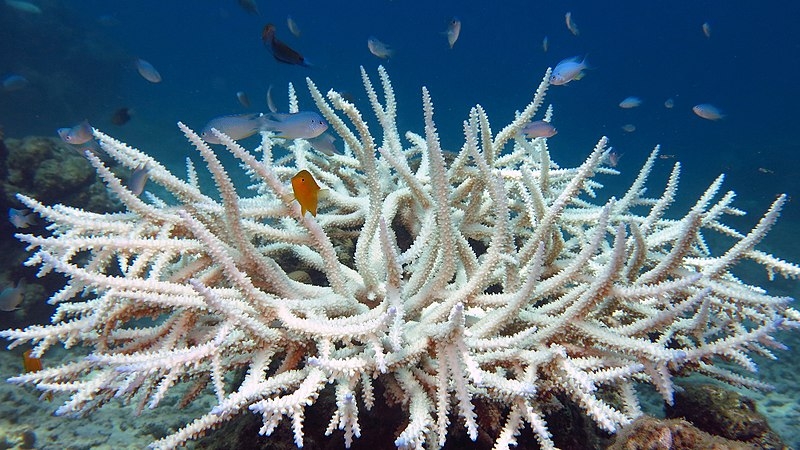
Image credit: Vardhan Patankar
Sunscreens are topical products that we use to help protect our skin from harmful UV rays which are known to cause skin cancers like melanoma.
There are two different types of sunscreen: physical and chemical. Physical sunscreens contain minerals that act as a shield to “block” out harmful rays. On the other hand, chemical sunscreens contain chemicals which absorb UV light before reaching our skin. The most worrisome of these chemical compounds are Oxybenzone and Octinoxate—which seep into the ocean when you swim in it. Even if you don’t go swimming, these chemicals can still leach into marine ecosystems through sewage plant outflows when you shower.
Research has shown that chemicals like Oxybenzone and Octinoxate damage the corals’ DNA which results in reefs that appear to look healthy but are sterile, dead and unable to reproduce. Studies have also shown that Oxybenzone has toxic effects on young coral as it exacerbates coral bleaching.
What is coral bleaching?
Healthy coral
Corals have a symbiotic relationship with a microscopic algae called zooxanthellae which lives in their tissues. The algae are the coral’s primary food source and it also gives corals their colour.
Stressed coral
Corals become stressed due to a variety of influences such as responding to the toxic effects of Oxybenzone in sunscreen, water pollution and rising ocean temperatures. When the coral becomes stressed, algae leave the coral’s tissue.
Bleached coral
Bleached corals are left more vulnerable as they lose their food source (algae). They also become more susceptible to disease and ultimately degenerate.
What happens if this continues
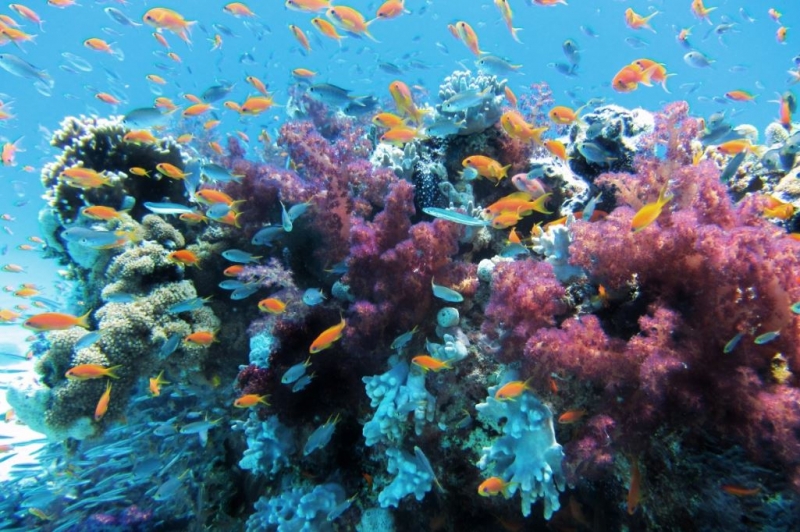
From this…
Oxybenzone damage, along with other issues, like rising sea temperatures (thanks to global warming), water pollution and ocean acidification catalyses the destruction of corals and marine habitats. Although coral bleaching does not directly kill coral, it causes them to be highly susceptible to stress and disease, leading to their ultimate degeneration. If this continues, corals could die out and with them, other species of marine life that depend on coral for survival.
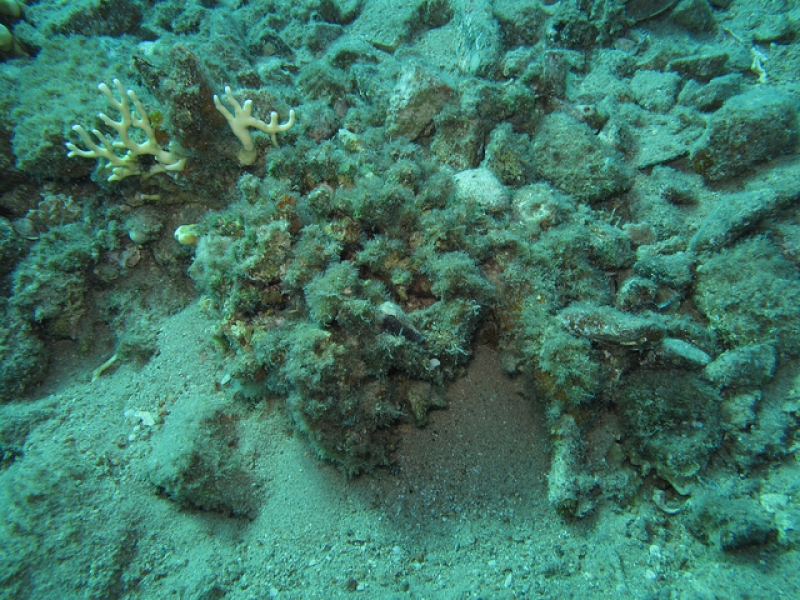
To this. | Image credit: prilfish
The benefits of coral reefs are uncountable. Like any other habitat, coral reefs provide homes to thousands of species of wildlife. Corals, in particular, can house up to 4,000 species of fish, and act as coastal protection as well—from being buffers along shorelines from wave action to preventing coastal erosion and flooding. Corals are also known to be of great medical value—coral reef organisms are currently already being used in treatments for diseases like cancer and HIV. Who knows what else we can glean from them as long as we can keep them healthy?
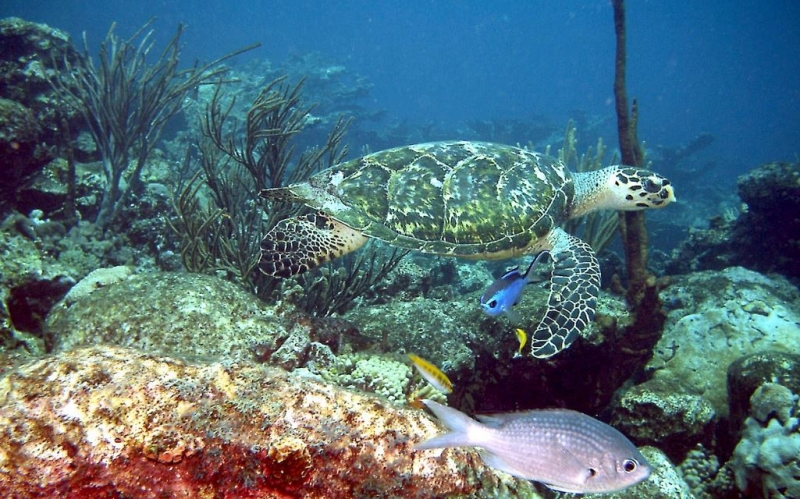
Image credit: Pedrosanch
Some animals that will lose their homes include multiple species of fishes along with whales, dolphins, whale sharks and even sea turtles such as the Hawksbill Sea Turtle, which is dependent on the reef as a food source.
Besides all this, tourism will also be affected. Famous reefs, like Australia’s Great Barrier Reef, have already been struggling with pollution for quite awhile. With new-found evidence that sunscreen poses detrimental effects to the ocean, countries need to step up management and preservation efforts to manage human traffic and allow the oceans to heal.
In May this year, that state of Hawaii passed a bill that will ban the sale or distribution of sunscreens containing toxic ingredients for the safety and protection of their coral reefs. This will come to effect on 1 Jan 2021. This makes Hawaii the first US state to enact legislation designed to protect their ecosystem, which is also a prized tourist attraction.
What can we do about it?
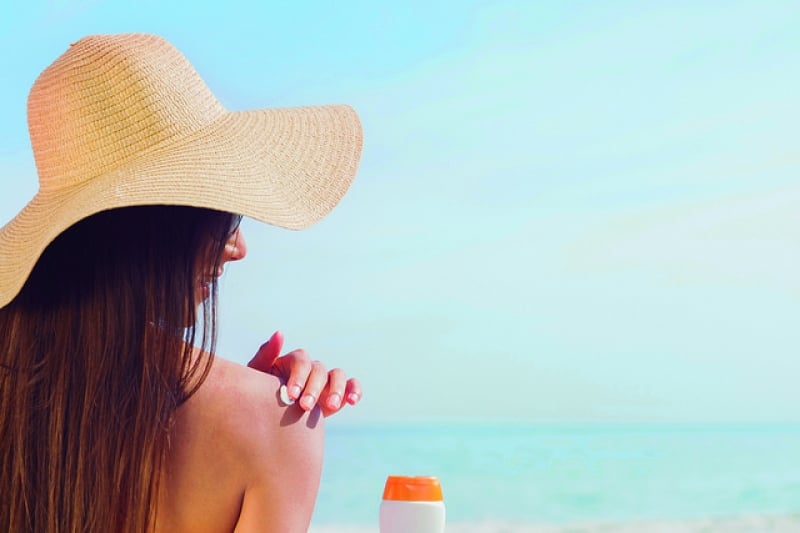
The bad news is that while sunscreen may be good for you, it is horribly adverse to the oceans. The good news is that there IS something you can do about it. No, we aren’t asking you to forgo sunscreen altogether but instead, choose to go for sunscreens that are green and reef-friendly by checking the labels and making sure that they do not contain harmful chemical compounds.
Tips for shopping for sunscreen
- Make sure oxybenzone and octinoxate are NOT in listed ingredients
These chemicals are harmful to corals and cause sunscreen-induced coral bleaching. When purchasing sunscreen, check to make sure that these chemicals are not in the ingredient list.
- Opt for mineral-based sunscreen with the ingredients zinc oxide and titanium dioxide
Opt for physical sunscreen instead of chemical sunscreen. Physical sunscreens made with zinc oxide and titanium dioxide are mineral-based, with particles that sit on top of the skin and block harmful UV rays. These ingredients are less harmful to corals and are not linked to coral bleaching.
- Look out for “Reef-safe” labels
You may suddenly find that the majority of sunscreens are labelled “reef safe” but don’t believe what you read. Always check the ingredients list to make sure that the product is what it claims to be.
Reef-friendly sunscreens to consider
Badger

Image credit: Badger Balm
Badger Balm’s sunscreens tick all the boxes. These natural sunscreens are certified organic and natural. They also provide safe broad-spectrum protection with zinc oxide.
Human Nature
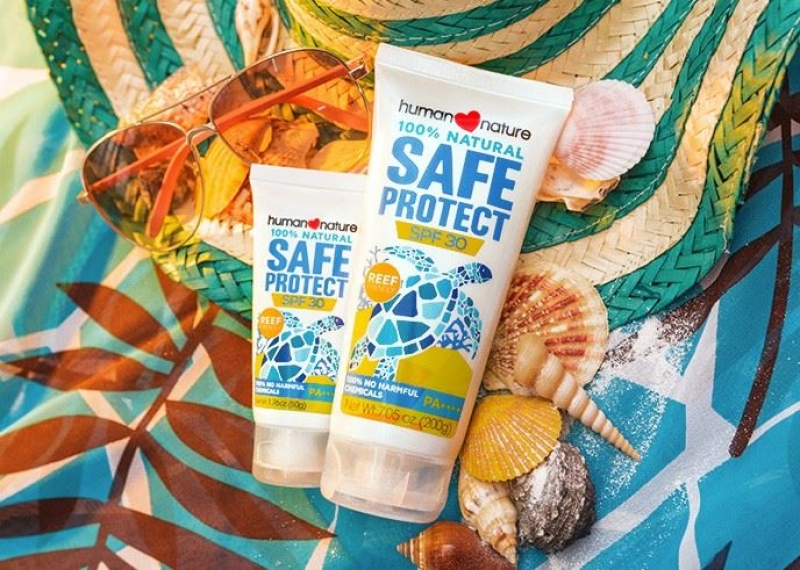
Image credit: Human Nature Singapore
Human Nature’s SAFEBLOCK sunscreen is broad spectrum and reef-friendly. It contains zinc oxide and natural ingredients like coconut and castor seed oil.
California Baby
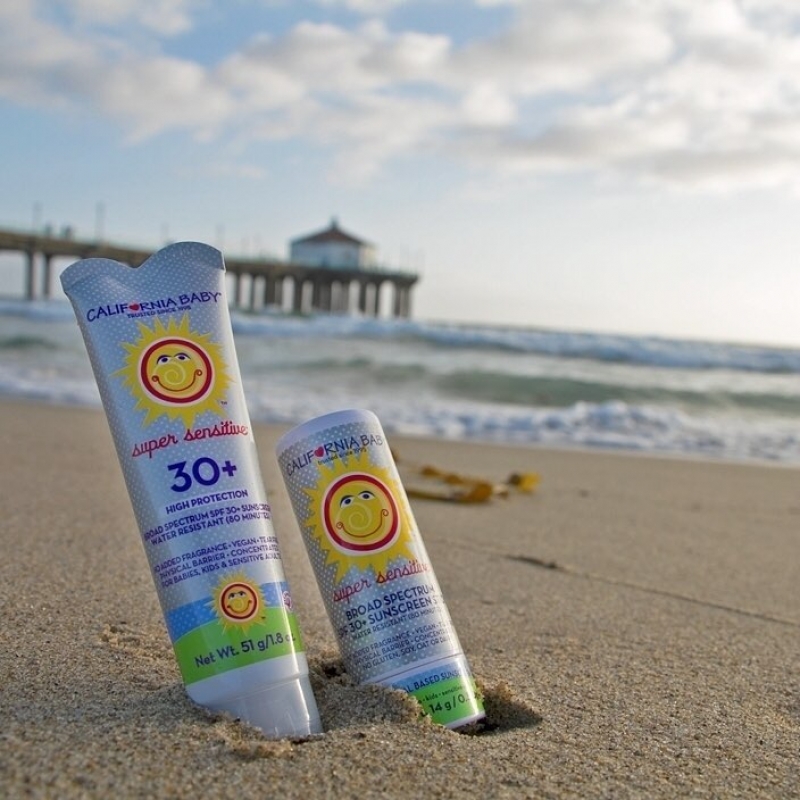
Image credit: California Baby
Baby-safe and reef-safe, California Baby sunscreens protect with zinc oxide and are available in cream and sunscreen-stick forms.
Nature can thrive without mankind but humans cannot survive without nature
From the overuse of plastic bags to killer litter, oil pollution and global warming, corals and other marine life are fighting hard to survive.
Something as simple as cutting down your carbon footprint or switching to reef-friendly sunscreen may seem insignificant now but perhaps (and hopefully), these little “insignificances” will pay off in time to come and create a better environment for future generations.




